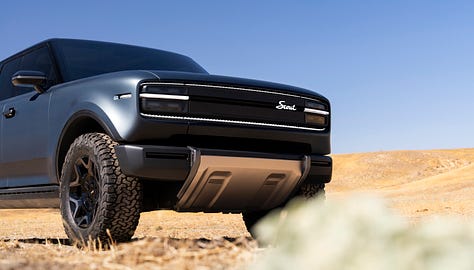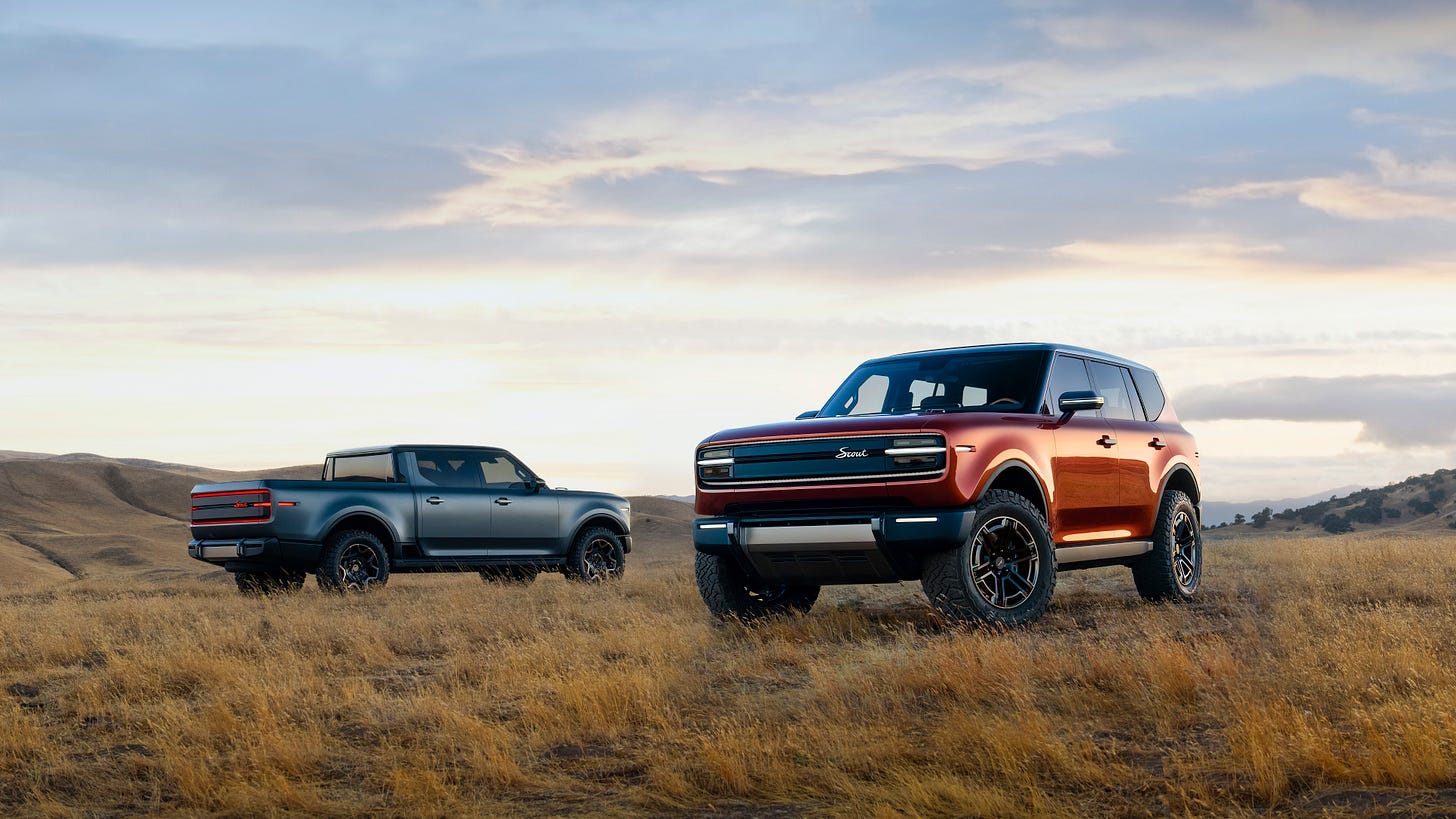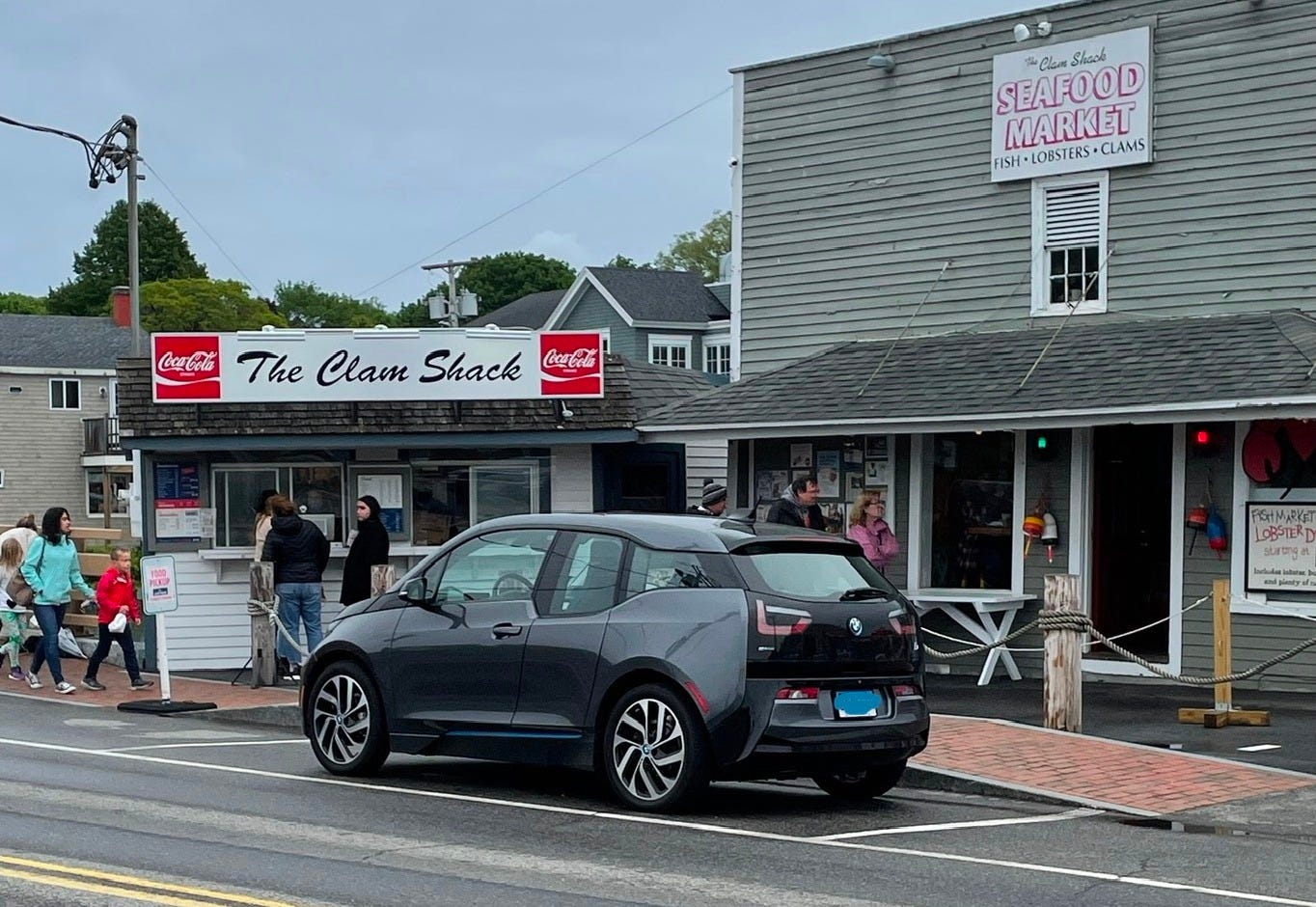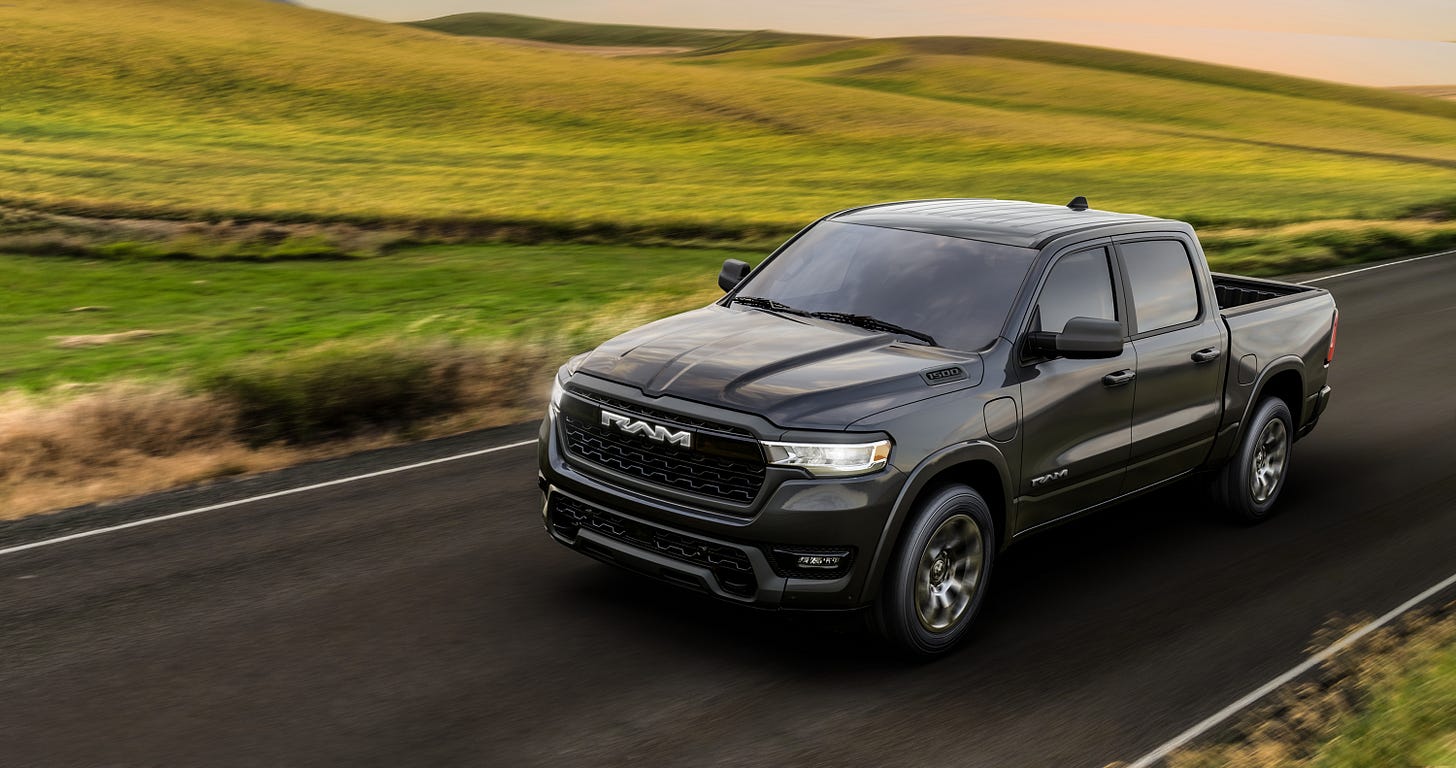Range extender tech is a key way forward in ‘Murican EVs
Upcoming vehicles from Ram and Scout are EVs with a gas backup plan, a great solution for U.S. roadways.
“Range anxiety.” The feeling a driver develops when they’re unsure that their vehicle has enough electric charge to complete its journey. Of course, it was a journalist (Richard Acello) who coined the phrase while writing about the groundbreaking (and storied) GM EV 1 in the ‘90s. But did you know GM tried to trademark “range anxiety”? Back in 2010, the company smartly believed that fear of being stranded with a dead battery was the best way to market the Chevy Volt over its biggest competitor at the time, Nissan’s all-electric Leaf.
The Volt’s advantage? It was an EREV, an Extended Range Electric Vehicle — an EV with an onboard gas engine that could serve as a generator to recharge the battery on the go. The gas engine never drives the wheels; it only charges the battery, which provides all of the car’s horsepower. So, when the battery is low, say on a road trip or an unexpectedly long journey or in an instance when you forgot to plug in, a trip to the gas station will keep the car moving. In 2010, with charging infrastructure essentially non-existent, the Volt’s setup was immensely practical, and almost a sheer necessity on American roads.
(As we’ve mentioned “EREV,” this seems like an opportune time to review some acronyms that get bandied about in car content that the regular reader might not know offhand. “BEV” stands for “battery electric vehicle,” meaning a fully-electric vehicle; “PHEV” is a “plug-in hybrid electric vehicle”; “HEV” is a “hybrid electric vehicle”; and “ICE” stands for “internal combustion engine,” so writers often refer to gas-powered vehicles as “ICE vehicles.” Maybe, these days, we should abandon the ICE acronym, given its awful alternative connotation in this country? For another discussion…anyway…)
We owned one of the world’s most popular EREVs: BMW’s i3, which debuted in 2013 as both a BEV and an EREV, and by the time our 2017 model rolled off the assembly line, it boasted a 33 kwH battery with 114 miles of range and a 34 horsepower motorcycle engine mounted under the rear cargo area that added 90 miles of range. It’s the best car we ever owned, and we only sold it because its size made rear-facing car seats a bit impractical, and because a total stranger offered to buy it from us in a parking lot for exactly what we’d paid for it two years earlier.
The range extender offered peace-of-mind while driving in the rural area where we lived at the time, and, frankly, it rarely fired up, even with the i3 having so little all-electric range, because we were charging at home and found few instances when we exceeded the battery’s capabilities, apart from road trips. In those cases, the little motor got us where we needed to go. The vast majority of the time, we were driving an EV.
Now imagine EREVs with the range of regular EVs — 300+ miles — with that gas-powered backup plan via a range extender. That’s what’s on offer in upcoming trucks from Ram and Scout, the resurrected brand now owned by the VW Group, and I think these are the types of plug-in “hybrids” that will endear more Americans to electrified driving.
The upcoming Ram 1500 Ramcharger (if you’re unfamiliar, Ram is now its own standalone brand after being under Dodge) is a full-size EV pickup that is expected to get 145 miles of all-electric range but also packs a V-6 engine up front to serve as a generator for recharging the battery and extending the range up to 690 miles. Plus, the electric powertrain provides 663 horsepower, on-site plug-in job power, and tons of towing capability — great for today’s ‘Murican truck owners — but it’ll drive and operate like an EV all the time. No, it won’t be the most efficient overall system — the smarties at The Autopian suggest it’ll only get 20 MPG once the battery is depleted — but if owners are doing their daily driving on electrons alone, the gas motor won’t be getting much use at all.
That brings us to the very chic offerings from Scout, a classic American brand which VW is resurrecting for 2026. Scout originally built boxy, stylish SUVs and trucks in the 1960s-70s, and the company recently revealed two retro-awesome launch vehicles, both set to be built in a brand new factory in South Carolina: the Traveler SUV and Terra Truck, both of which are standard EVs with an optional range extender called the Harvester. Scout’s approach differs from Ram’s in that their vehicles will aim for much greater all-electric range (around 350 miles on battery alone) with the gas generator responsible for adding just 150 miles of additional capability.



If you’ve gotten this far you might be asking: what’s the difference between these EREVs and a PHEV, or plug-in hybrid? An EREV is an electric vehicle whereas a PHEV is not. In an EREV, the gas engine is not connected to the wheels, whereas in a PHEV both the electric motor and gas engine can drive the wheels separately or in unison. When driving a PHEV in all-electric mode, you’re likely to have very compromised performance because you’re accessing the power of the electric motor and battery alone, which is a fraction of a PHEV’s total overall power output.
For example, I recently drove the Kia Sorento PHEV, a three-row SUV, and in all-electric mode, I could barely keep up with traffic on a 45 MPH road, and once I pushed the throttle past a certain point, the gas motor kicked on anyway. For a lot less money, you could buy the standard hybrid version of the same SUV and get similar gas mileage while not needing to carefully feather your accelerator pedal to eke out electric miles.
Also, the complexity of PHEV systems makes them 70% less reliable than ICE vehicles, per Consumer Reports, and 28% less reliable than EVs.
I would love to see more automakers considering EREV tech, especially for the U.S. market where we do tend to cover longer distances and don’t presently have high speed rail offering cheaper connections between cities (but we should!). I believe EREVs can give ICE drivers a taste of what’s great about EVs and eradicate that fear that GM so rightfully identified 15 years ago.





I didn't even know that a back up gas engine was a thing. Very cool technology, and I agree it'll go a long way to ease the range anxiety of many would-be EV buyers.